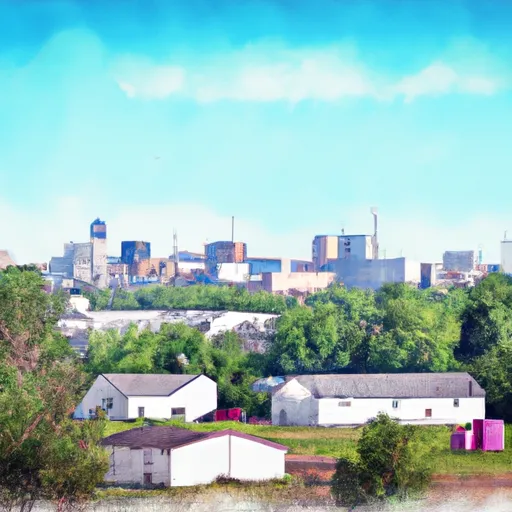-
 Snoflo Premium
Snoflo Premium
Get unlimited access to all our content
With no Ad interruptions! - Start Your Free Trial Login with existing account
Gatzke
Eden Index
Climate
4.6
•
Recreation
1.4
•
Community
•
Safeguard
2.3/10

Gatzke is a small town in Marshall County, Minnesota. The climate is characterized by cold winters and warm summers, with an average annual temperature of 42°F. The town is located in the Red River Basin and is primarily fed by the Roseau River, along with several smaller streams and lakes. The hydrology constituents in the area include nitrates, phosphorus, and total suspended solids. Outdoor recreation opportunities in the area include fishing and hunting, with popular game species including walleye, northern pike, and white-tailed deer. The nearby Agassiz National Wildlife Refuge offers hiking, birdwatching, and wildlife viewing opportunities.
What is the Eden Index?
The Snoflo Eden Index serves as a comprehensive rating system for regions, evaluating their desirability through a holistic assessment of climate health, outdoor recreation opportunities, and natural disaster risk, acknowledging the profound impact of these factors on livability and well-being.
Climate Health Indicator (CHI): 4.6
Gatzke receives approximately
582mm of rain per year,
with humidity levels near 83%
and air temperatures averaging around
4°C.
Gatzke has a plant hardyness factor of
3, meaning
plants and agriculture in this region thrive during a short period during spring and early summer. Most
plants will die off during the colder winter months.
By considering the ideal temperature range, reliable water supplies, clean air, and stable seasonal rain or snowpacks, the Climate Health Indicator (CHI) underscores the significance of a healthy climate as the foundation for quality living.
A healthy climate is paramount for ensuring a high quality of life and livability in a region, fostering both physical well-being and environmental harmony. This can be characterized by ideal temperatures, reliable access to water supplies, clean air, and consistent seasonal rain or snowpacks.
Weather Forecast
Streamflow Conditions
Lower Red
Area Rivers
Lower Red
Snowpack Depths
Lower Red
Reservoir Storage Capacity
Lower Red
Groundwater Levels
Recreational Opportunity Index (ROI): 1.4
The Recreational Opportunity Index (ROI) recognizes the value of outdoor recreational options, such as parks, hiking trails, camping sites, and fishing spots, while acknowledging that climate plays a pivotal role in ensuring the comfort and consistency of these experiences.
Access to outdoor recreational opportunities, encompassing activities such as parks, hiking, camping, and fishing, is crucial for overall well-being, and the climate plays a pivotal role in enabling and enhancing these experiences, ensuring that individuals can engage in nature-based activities comfortably and consistently.
Camping Areas
| Campground | Campsites | Reservations | Toilets | Showers | Elevation |
|---|---|---|---|---|---|
| American Legion Park - Detroit Lakes | 100 | 1,342 ft | |||
| Brereton Lake - Whiteshell Provincial Park | 29 | 1,034 ft | |||
| Opapiskaw - Whiteshell Provincial Park | 71 | 931 ft | |||
| Maplewood State Park | 70 | 1,418 ft | |||
| Nutimik Lake - Whiteshell Provincial Park | 98 | 954 ft | |||
| Hayes Lake State Park | 35 | 1,182 ft | |||
| Otter Falls - Whiteshell Provincial Park | 74 | 894 ft | |||
| Grygla Camping Area | None | 1,174 ft | |||
| Betula Lake - Whiteshell Provincial Park | 14 | 1,000 ft | |||
| Glendalough State Park | 22 | 1,350 ft |
Nearby Fishing
Catastrophe Safeguard Index (CSI):
The Catastrophe Safeguard Index (CSI) recognizes that natural disaster risk, encompassing floods, fires, hurricanes, and tornadoes, can drastically affect safety and the overall appeal of an area.
The level of natural disaster risk in a region significantly affects safety and the overall livability, with climate change amplifying these risks by potentially increasing the frequency and intensity of events like floods, fires, hurricanes, and tornadoes, thereby posing substantial challenges to community resilience and well-being.
Community Resilience Indicator (CRI):
The Community Resilience Indicator (CRI) recognizes that education, healthcare, and socioeconomics are crucial to the well-being of a region. The CRI acknowledges the profound impact of these elements on residents' overall quality of life. By evaluating educational resources, healthcare accessibility, and economic inclusivity, the index captures the essential aspects that contribute to a thriving community, fostering resident satisfaction, equity, and social cohesion.

